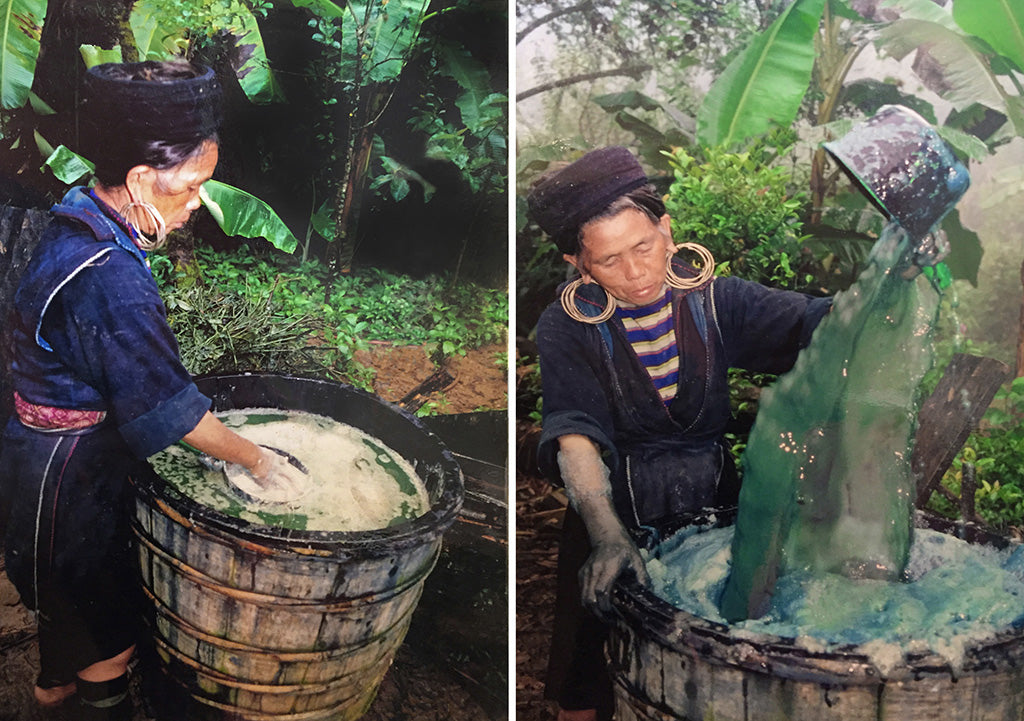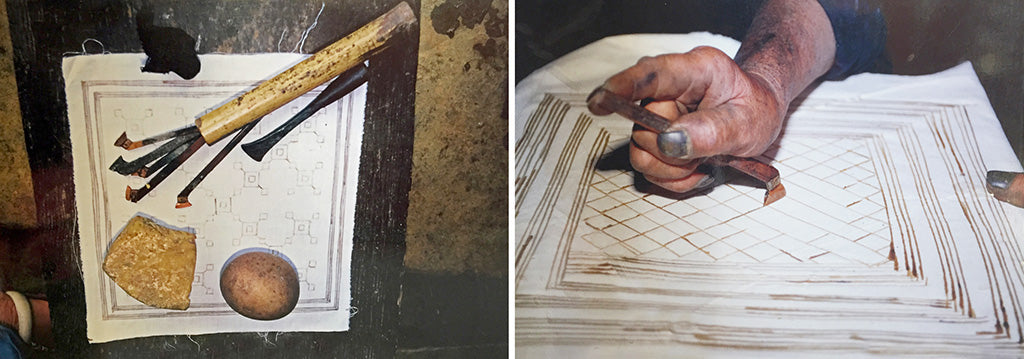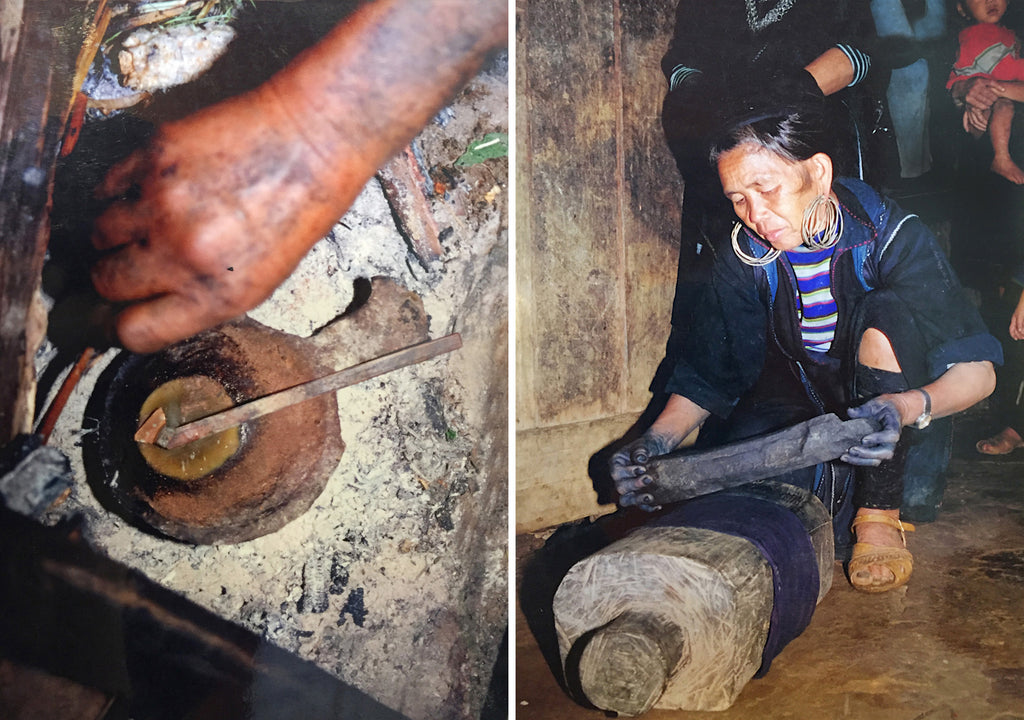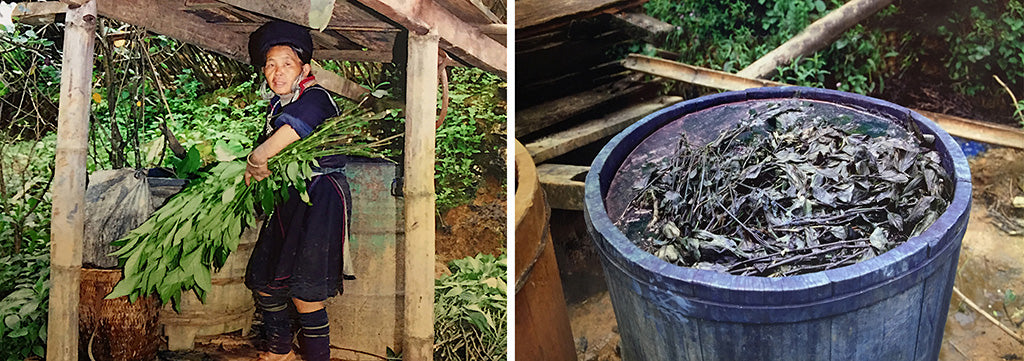Indigo - living blue miracle
We have been privileged to visit the mountain villagers in Sapa, Northern Vietnam where they produce beautiful work reflecting long traditions and their own individuality in their indigo designs.
"My Indigo is sleeping from the cold", "My Indigo is is resting", and "My Indigo has died" are all phrases you will hear from the keepers of the very temperamental, living vats of indigo. Mixtures where ordinary looking green leaves transform into a very potent brew produce an exceptional natural blue dye used around the world for centuries. In some cultures prayers and offerings are made to the indigo vat before using it, recognising that it is alive and has spiritual qualities.
Fresh Leaves are harvested from Indigo plants and placed into a large tub to extract the dye. Indigo 'brews' may live in large buckets, recycled drums and in some countries the dye is stored and nurtured in covered pits around 17 feet (over 5 metres) deep, where the fabric is immersed and stirred using long poles.

Lime is added to the mix and within a few days the leaves start to give up their Indigo Essence producing a bright green colour. The green water is lifted and poured continuously to introduce oxygen and then left for a time to 'rest'. When it is stirred, the very strong blue colour reveals itself.

The Hmong Hilltribe Villagers of Northern Thailand and Vietnam area use a wax dye resist method to produce their wonderful designs. The wax is kept heated on coals and slowly applied using very simple ancient tools. Sometimes hand carved wooden or metal stamps are used to apply the wax patterns, in intricate and traditional designs.

When the hemp is dyed it is rigid and stiff and a heavy stone is used to soften and smooth the coarse fabric. Some ancient cultures apply mud to the fabric to create areas where the dye cannot penetrate, creating delightful patterns for their clothes and home decorations.

Our growing love affair with Indigo is enhanced each time we find another example of this extraordinary technique and marvel at the various methods used to create truly unique cloth. The time, skills and effort needed to firstly hand weave and then produce a short piece of decorated fabric from natural fibres and dyes using traditional methods makes each piece a work of art to be fully appreciated.
Photos by R Utsumi with appreciation


